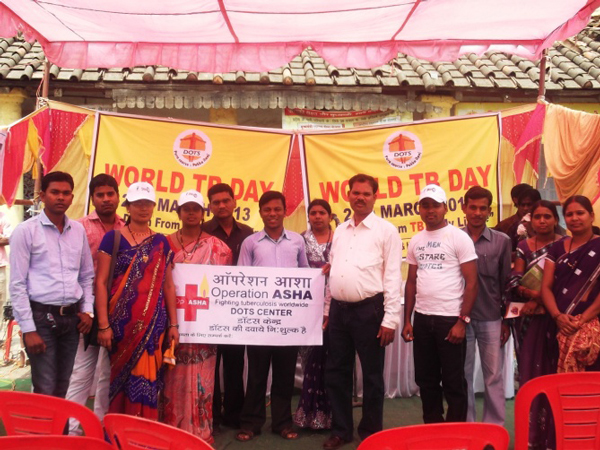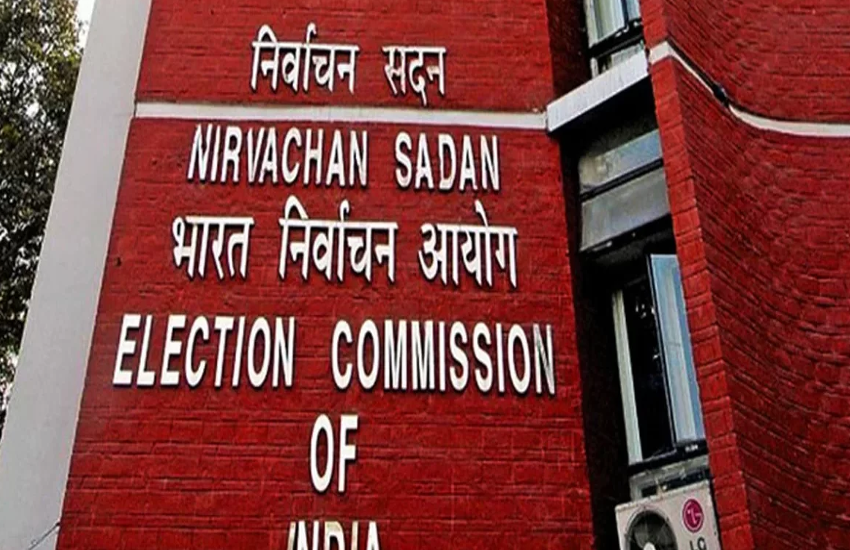Alarming rise in TB cases in Chhattisgarh's industrial belt

- TB cases are on the rise in Chhattisgarh\'s Raigarh district
- The reason is pollution from power, steel, cement plants and coal mines
- There have been 14,000 TB cases in 10 blocks near Raigarh. Tribals are worst affected
- What steps are being taken?
- Why people aren\'t receiving treatment
- How development has become a curse in some tribal areas
Sulga Kanwar, 27, doesn't smoke bidi or cigarette yet he is suffering from tuberculosis (TB). Sulga and other people from his village work in the Nalwa Steel Plant in the Raigarh district of Chhattisgarh.
He and his co-workers belong to Tariamal, a village populated by the Kanwar community in Raigarh district. He says that many young men and women who work at the steel plant are suffering from TB.
He further narrates that 6 months ago, doctors told him that he his suffering from lung diseases. And it is all due to the smoke and pollution coming from the steel plant. Most of the workers at the plant are tribals.
Other people from the village say that the height of the plant's chimneys is so low that the smoke directly enters their homes. The resident medical officers says that the main reason for lung diseases is that labourers are exposed to pollution 24x7.
They have to face the pollution inside as well as outside the factory.
Development as a curse
The haphazard industrial development in Chhattisgarh in the last few years is proving to be a curse for local residents here. The dust and smoke raised by the power, steel, cement plants and coal mines is badly affecting the lungs of local tribals.
The poisonous particles emitted from the factories of these 10 development blocks has resulted in a widespread outbreak of TB. X-ray reports of patients from the last 5 years indicate that over 14,000 people show or have shown symptoms of TB, of which nearly 8,000 are tribals. These latest figures were revealed by the Revised National Tuberculosis Control Program (RNTBCC), Chhattisgarh.
In spite of a directive that all factories must install pollution control equipment, the blocks in question are heavily polluted. A sponge iron plant burns some 7,000-8,000 tonnes of coal daily and emits smoke and ash. Factory owners are least concerned about the well being of the workers.
Chief Medical Health Officer (CMHO) Raipur district Dr. KR Sonwani says that TB is the most common disease among people working in plant and mines. Generally, workers are unable to seek medical help in the initial stages of the disease. As a result it spreads and becomes much more serious.
In the 1960s, the Bhilai Steel Plant was the main industrial unit in Chhattisgarh. Today, there are many such units. The number of sponge iron alone goes into hundreds. Additionally, ferro-alloy and re-rolling units are also present. The smoke emitted from these units has polluted the environment to such an extent that it seems to be full of soot.

Medical impact
The director of the Chhattisgarh State Health Resource Center (CGSHRC), Dr Prabir Chatterjee, says that labourers working in quarries and factories have weak lungs because they're exposed to dust. As a result, they're more susceptible to TB.
According to the TB Prevention Resource Centre, X-ray reports from four blocks of Raigarh alone indicate that 6,040 people have TB symptoms.
When asked about this, Dr V. Jayaprakash, the in-charge at the RNTBCC, said that there was a separate survey being conducted to assess the extent of the problem. According to him, a check for a cough often doesn't reveal if one is infected by TB while X-ray reports can definitively settle the question. Diagnostic centers for this have been created at Raipur, Durg and Jagdalpur.
Special arrangements have also been made for the treatment of the 6,040 people suspected to be infected with TB.
The downside is that the medicines required for their treatment are very expensive. So even as the government has initiated scheme after scheme to make treatment available for free, there is no specific plan for particular regions where TB is rampant.
Worse yet, public awareness about the disease is woefully low. There are nearly 1.25 lakh TB patients in Chhattisgarh, only about a fourth - 25,889 - have sought treatment.
Chhattisgarh's Health Minister Ajay Chandrakar says the situation in plants and mines is dangerous but he is confident that the government would gain control over it soon. "We are going to start the Akshay Poshan Yojna to provide TB patients free medication and food," he said.
Raipur has the highest number of patients at 14,188, of which only 2,848 have been listed for treatment. In Durg, the respective numbers are 13,340 and 3,080. Experts say that since most of the patients are not being treated, the illness is spreading faster.
The primary medicine for normal TB is ineffective on Multi-drug-resistant (MDR) TB patients in the state. And with the medicine for the subsequent stages of treatment being 100 times expensive, fewer patients have been receiving treatment. Experts opinion, MDR TB, which is the most dangerous form of the disease-causing bacterium , is becoming more widespread as a result.
Statistics available with the National TB Program show that between January-March 2016, 86 patients had been identified as suffering from MDR-TB, of which only 50 have been treated. In 2015, 185 patients of MDR-TB were treated out of 225.
Overall, records maintained by government hospitals show that in the last five years, 2,051 patients had been suffering from MDR-TB while only 560 have been treated.
The solution
The state government has no solution to tackle this life threatening illness. There is a shortage of proper laboratories like CBNAAT lab to study these types of TB. At the same time, incorrect treatment and lack of awareness among patients is a big reason for denying patients access to treatment.
A few days back, a farmer Kashiram died because he couldn't get proper treatment. He had been suffering from TB for 20 years.
A look at Chhattisgarh's TB patients reveals an increasing correlation with HIV. In the last one year there were 395 patients confirmed as being infected with AIDS.
Dr Prabir Chatterjee says that the risk of developing TB is estimated to be between 26 and 31 times greater in people living with HIV than among those without HIV. That's because tuberculosis takes advantage of a weakened immune system, which is why it's called an opportunistic infection. Worldwide, TB is the leading cause of death for people infected with HIV. If you are HIV-positive, you should get tested for TB. Prevention and treatment not only help control tuberculosis, but also help prevent greater damage to the immune system.
Wake up, govt! India's AIDS programme stands on the brink of collapse
New tuberculosis drug, Bedaquiline, in the offing, but not a panacea
Out of 22 countries, India ranks 14th in TB prevalence
First published: 27 April 2016, 10:13 IST




![BJP's Kapil Mishra recreates Shankar Mahadevan’s ‘Breathless’ song to highlight Delhi pollution [WATCH] BJP's Kapil Mishra recreates Shankar Mahadevan’s ‘Breathless’ song to highlight Delhi pollution [WATCH]](https://images.catchnews.com/upload/2022/11/03/kapil-mishra_240884_300x172.png)

![Anupam Kher shares pictures of his toned body on 67th birthday [MUST SEE] Anupam Kher shares pictures of his toned body on 67th birthday [MUST SEE]](https://images.catchnews.com/upload/2022/03/07/Anupam_kher_231145_300x172.jpg)






